Module 3
1. Module 3
1.38. Page 9
Module 3—Electrical Phenomena
The Electric Field Between Charged Plates

© Lisa F. Young/shutterstock
Many graphic artists prefer to use the old-style CRT monitors because these monitors often give a truer representation of colours than LCD monitors.
The key component of a CRT monitor is the picture tube, which uses two oppositely charged parallel plates to accelerate a beam of electrons toward the screen. When the electrons hit the phosphor coatings on the inside of the screen, many colours of light are produced. Controlling the voltage regulates the electric field between the parallel plates in the picture tube. How does the voltage across two parallel plates relate to the strength of the electric field between those plates?
 Read
Read
To learn how potential difference can be used to develop a new equation describing the electric field between parallel plates, read pages 567 and 568 of your textbook.
 Self-Check
Self-Check
SC 13. Produce a flowchart to show how potential difference can be used to derive a new equation describing the electric field between charged plates.
SC 14. Complete a unit analysis to show that one volt per metre is equivalent to one newton per coulomb.
SC 15. Complete “Practice Problem” 2 on page 568 of your textbook.
 Self-Check Answers
Self-Check Answers
SC 13. Here is one possible flow chart showing the derivation.
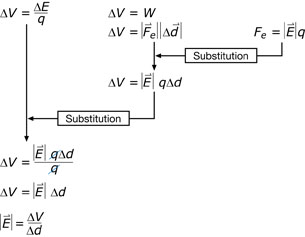
SC 14.
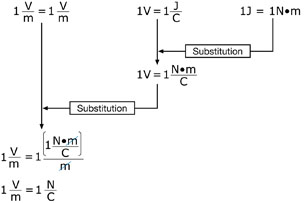
SC 15.
Given

Required
The voltage across the spark plug’s electrodes.
Analysis and Solution
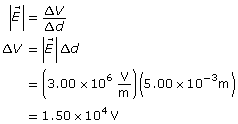
Paraphrase
The voltage across the electrodes is 1.50×104 V.
 Try This
Try This
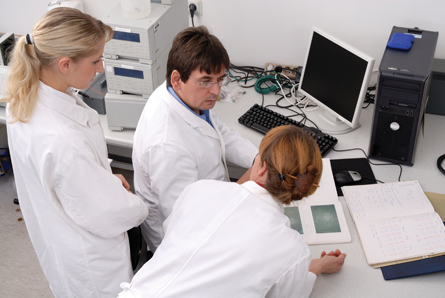
© Yury Asotov/shutterstock
Researchers in a physics lab were experimenting with charged particles moving between parallel plates. In the course of their research, they decided to modify the apparatus to increase the strength of the electric field between the two plates.
The researchers doubled the potential difference across the plates and then reduced the separation of the plates to a third of its original value. As the following analysis with ratios demonstrates, the final arrangement of the apparatus resulted in producing an electric field that was six times stronger than the electric field in the initial arrangement of the apparatus.

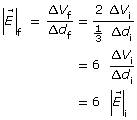
 Try This
Try This
TR 2. Suppose the researchers made further modifications to the apparatus. This time, they made the potential difference across the plates four times larger than the initial apparatus and they reduced the separation of the plates to a fifth of the initial value. Use a ratio analysis to determine how the electric field strength in this final arrangement compares to the electric field strength in the initial arrangement.